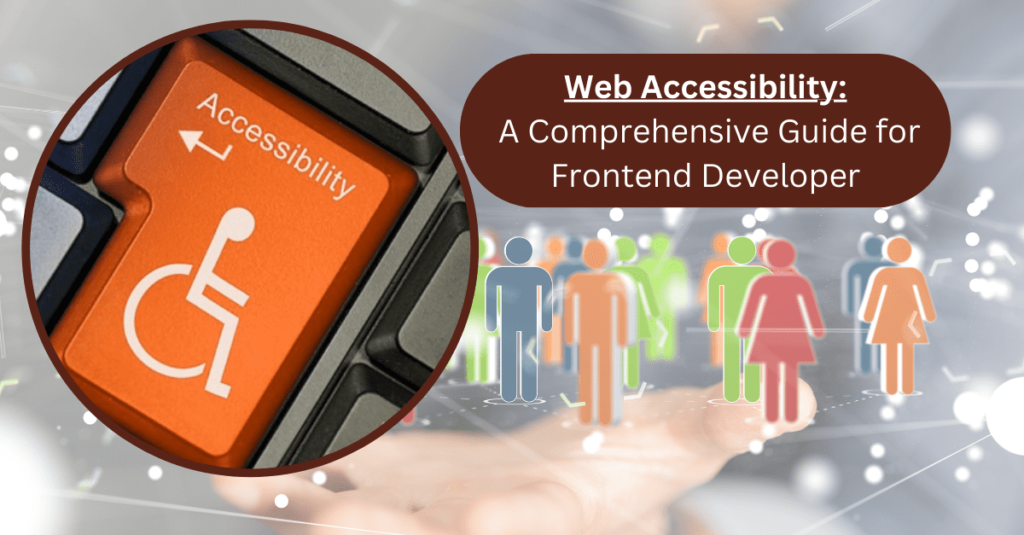In the world of front-end development, the pursuit of visually stunning and functional web apps often takes center stage. However, the vital aspect of accessibility for all users is often overlooked. Startling findings from the WebAIM Million report revealed that a mere 3.7% of the top 1 million websites’ home pages adhere to basic accessibility guidelines, leaving a staggering 96.3% of websites inaccessible to individuals with disabilities. This alarming statistic cannot be ignored. In this comprehensive guide, frontend developers will uncover the importance of web accessibility, explore its fundamental principles, and gain invaluable insights and practical tips for enhancing their websites’ accessibility. It’s time to bridge the gap and make the web inclusive for everyone.
What is web accessibility and why it is important?
Web accessibility refers to the technique of creating websites and web applications which are easily accessible to individuals with disabilities, including cognitive or physical impairments. It involves incorporating tools and resources, like screen readers or braille displays, to make digital content accessible to all users.
Web accessibility is very important in promoting inclusivity, diversity, and equality, ensuring that everyone can fully participate and thrive in the digital world. As a front-end developer, the importance of web accessibility has become evident, and in the next section, we will delve into various ways to incorporate accessibility into web projects.
Tips to create a web-accessible website:
Web accessibility has to incorporate right from the design process. The user interface must be designed considering the font size, font type, color palette, and overall web structure. It’s important to note that web accessibility is an ongoing process that requires collaboration from the web designer, developer, and content writer to ensure that the digital content is accessible to all users. Front-end developers can improve web accessibility in various ways.
- Using semantic HTML: The developers, instead of just using a tag, must opt for semantic HTML tags to improve accessibility and make the website search friendly. For example, using a tag for the navigation, tag for the main content, and tag for vaguely related content are the better way to make the website accessible. In this way, the purpose of each section code is accurately described without any additional comments. Semantic HTML also enhances navigation for assistive technology users.
- Use of accessible friendly colors and fonts: Why did the poorly-contrasted website cross the road? To get to the other “sight” (site)! Dad jokes aside, as a web developer, it’s important to use accessible colors and contrast. While designers typically handle this aspect, being mindful of visual impairments is crucial. Just because you can see the content clearly doesn’t mean everyone can.
- Be mindful of your color choices: Take into consideration the interplay between your background and text, avoiding dark text on dark backgrounds. To ensure accessibility, you can utilize a contrast ratio checker tool to evaluate your design.
- Avoid relying solely on color to convey information: For a seamless user experience, links, and action buttons should not solely rely on color. Consider adding an underline to clickable links to provide visual cues.
- Opt for legible fonts: When selecting fonts for your website, prioritize readability. Sans-serif fonts such as Arial, Verdana, and Helvetica are typically more legible on screens compared to serif fonts.
- Choose the right font size: Following the guidelines of Web Content Accessibility, setting your body text to a font size of 16px is recommended for optimal readability.
- Put your designs to the test: Take the time to test your website across various devices and screen resolutions, verifying that your font size and type are clear and accessible for all users.
- Leverage ARIA attributes: Consider utilizing ARIA (Accessible Rich Internet Applications) attributes, which can be added to HTML tags to provide valuable information about an element’s role and properties. This can enhance the experience of users who rely on screen readers for accessibility.
How to test your website for web accessibility?
There are numerous tools available to evaluate the accessibility of your website. Some widely used options include:
- WAVE: This free tool assesses your website for accessibility and generates a comprehensive report. Learn more about WAVE.
- AXE: As a free Chrome extension, AXE employs automated testing to identify and enhance web accessibility. Learn more about AXE.
- LIGHTHOUSE: Developed by Google, Lighthouse is an open-source tool commonly used by developers to test the performance and accessibility of websites. It’s accessible here.
- NVDA: NVDA (NonVisual Desktop Access) is a free, open-source screen reader that empowers individuals who are visually impaired to navigate the web and other computer applications. Download NVDA to gain insights on improving accessibility on your website. It can be downloaded here.
Here you will get a comprehensive idea about accessibility, its importance, and how to design an accessible website to improve overall user experience. It is the moral responsibility of the front-end developers to create an inclusive website and web application.
